Paul
Oct 28, 2024
Table of Contents |
|
AI voices are changing film and animation by bringing new levels of efficiency, flexibility, and creativity to the production process. The best AI voice generator, such as LOVO, offers ease of use, a wide range of voice options, and high-quality, realistic output, making it an industry leader with over 500 voices in over 100 languages. From creating tailor-made voices to reducing costs and speeding up workflows, AI voice technology is reshaping how studios approach voiceovers. This article will explore how AI voices are changing film and animation and what this means for the future of storytelling.
Key Takeaways
- AI voice technology is changing film and animation by creating hyper-realistic voice performances that capture human intonation and emotion, enhancing character portrayal and storytelling.
- Studios benefit from AI voice generators through rapid voice creation, customization for specific characters, significant cost savings, and faster turnaround times, making high-quality voiceovers more accessible.
- While AI voices offer new creative possibilities and efficiency, they also raise ethical concerns regarding job displacement and fair compensation for voice actors, necessitating clear protocols and fair compensation models.
The Evolution of AI Voice Technology in Film and Animation
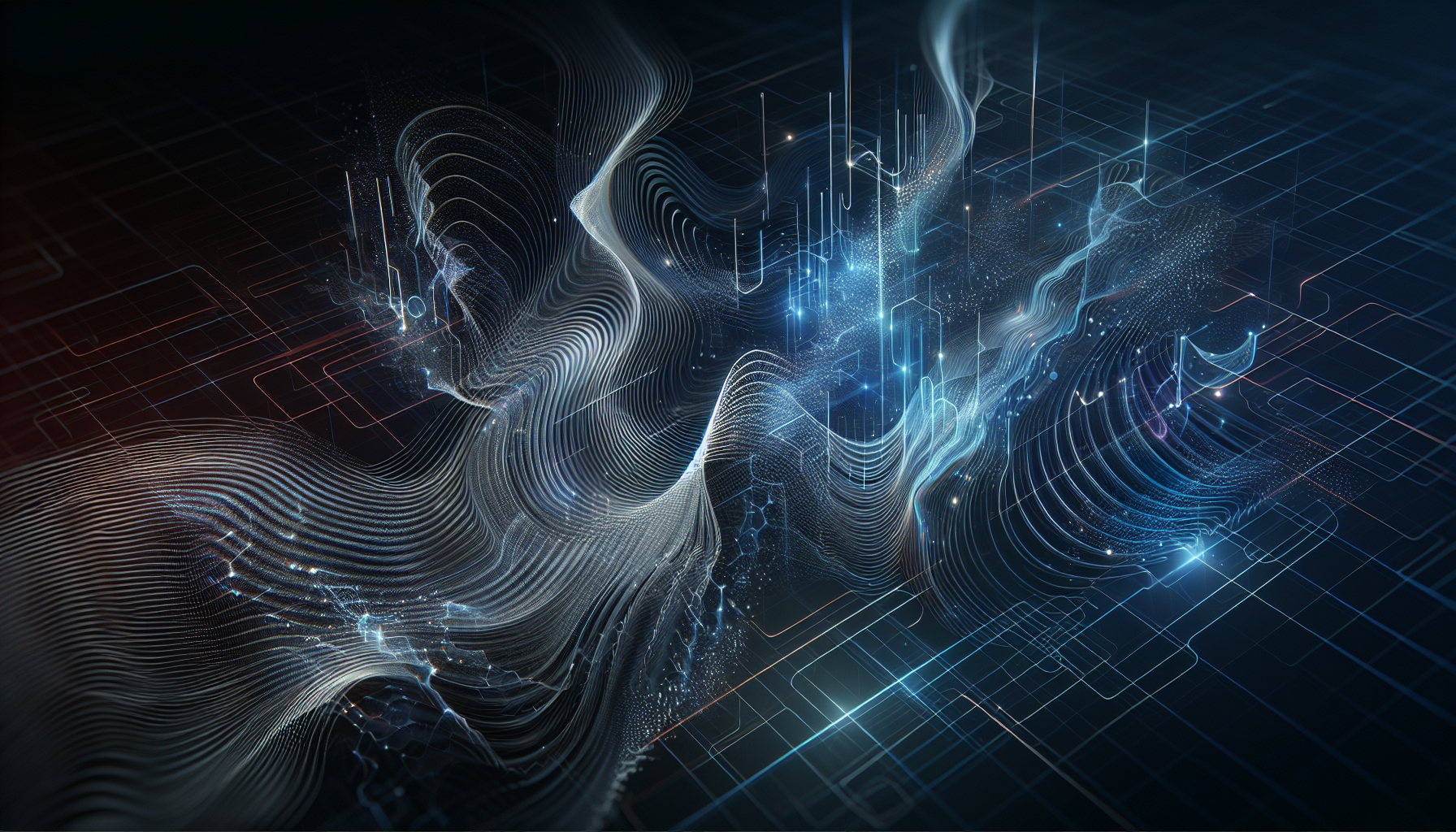
The development of AI voice technology in film and animation showcases human ingenuity and constant innovation. From the nascent days of voice synthesis and cloning, we’ve come a long way in understanding and replicating the intricate nuances of human speech. Early innovations laid the groundwork, enabling studios to replicate real voices and experiment with new forms of storytelling.
In recent years, AI voiceovers have emerged as a crucial part of character portrayal, indicating a marked shift in storytelling technology. The inclusion of this technology has changed the portrayal of characters on screen. Advanced machine learning algorithms analyze and mimic the unique vocal characteristics of target speakers, producing synthesized voices that closely resemble the original. This technology is transforming film and animation, providing creators with innovative tools to captivate audiences and expand the possibilities.
Early Innovations in AI Voices
The origins of AI voice technology lie in the pioneering breakthroughs in voice synthesis and cloning. IBM’s Shoebox, introduced in 1962, was a pioneering device capable of recognizing sixteen spoken English words and digits, marking the dawn of voice-activated technology. These early strides laid the foundation for advanced applications, like emulating the voices of celebrities and historical figures for creative projects.
Voice synthesis and cloning technologies use advanced machine learning algorithms to closely study and recreate the subtle aspects of human speech, such as intonation, pacing, and emotion. The goal of these technologies is to produce highly realistic and natural-sounding vocal imitations. This capability allowed studios to streamline production workflows, significantly reduce production costs, and explore new creative avenues.
The evolution from mechanical wonders of the 1800s to today’s digital virtuosos highlights the transformative potential of AI voice generators in the entertainment industry.
AI Voice Timeline |
Key Milestones in Voice Synthesis and Cloning
|
Advancements in Natural Sounding AI Voices
Recent advancements in AI voice technology have taken us from robotic-sounding outputs to hyper-realistic voice performances that capture the subtleties of human expression. Modern AI voice tools can now replicate the emotional depth and intonation of human speech, making synthesized voices more lifelike and believable. This leap forward has had a profound impact on character portrayal, enhancing the emotional authenticity of animated characters.
The integration of natural language processing (NLP) has further improved the ability of AI to understand and generate human-like speech. The technology allows for:
- The quick creation of voice tracks in various languages, dialects, and accents
- Promoting cultural diversity and expanding global accessibility
- Creating ultra-realistic voices that resonate emotionally with audiences
With AI-driven voice synthesis and text to speech technology, the dream of creating ultra-realistic AI generated voice that resonate emotionally with audiences is now a reality, thanks to advancements in voice AI and the use of a voice generator realistic in its output.
Advancements in AI Voices |
Modern Features in AI Voice Technology
|
Benefits of AI Voice Generators for Studios
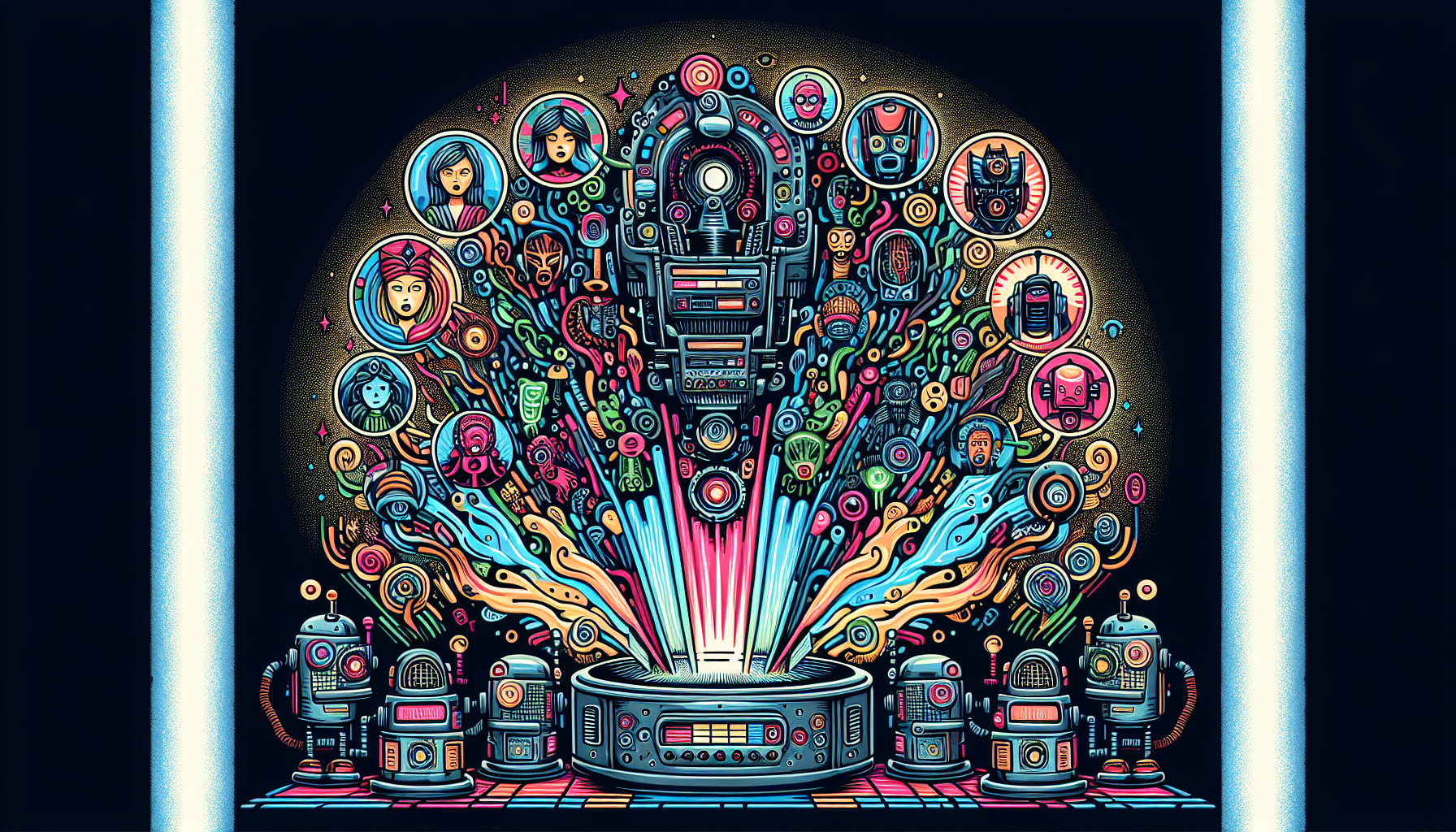
AI voice generators bring a host of benefits to film and animation studios, changing the way voices are created and utilized in productions. One of the key benefits is the capacity to voice generator produce tailored voices as needed. Studios have the capability to rapidly generate unique voices customized for specific characters or projects, giving them increased control over creative direction and enriching narrative depth.
Some of the benefits of AI voice generators, like an ai voice generator, include:
- Rapid generation of unique voices
- Customization for specific characters or projects
- Increased control over creative direction
- Enriched narrative depth
These benefits make AI voice generators a valuable tool for studios in the film and animation industry.
Apart from providing creative flexibility, AI voice generators also lead to significant cost savings. By reducing reliance on human actors and their scheduling constraints, studios can decrease production costs and speed up production timelines. This efficiency is particularly beneficial for projects with extensive voiceover requirements or tight budgets, making high-quality voiceovers more accessible than ever before.
Custom Voices on Demand
AI voice tools enable studios to:
- Generate custom voices by merging multiple voice models
- Create distinct and consistent vocal characteristics for characters
- Enhance the storytelling experience by providing voices that are perfectly tailored to the roles and personalities of characters
- Describe the desired vocal characteristics, and AI can generate voices that match these specifications.
The versatility of AI voices is not limited to creating unique characters. It also facilitates rapid adaptation of voices to different languages and cultures, paving the way for global content distribution and localization. This adaptability ensures that stories maintain their authenticity and emotional impact across diverse audiences.
Reduced Production Costs
AI voiceovers offer several benefits, including:
- Significantly reducing production costs by eliminating the need for extensive human voice actor sessions
- Eliminating long-term contracts with voice actors, resulting in considerable savings in recurring costs
- Minimizing the need for extensive studio time, cutting down on associated rental and operational costs
These advantages make AI voice technology a cost-effective solution for voiceovers.
The scalability of AI voiceovers makes it feasible to:
- Produce large volumes of voice content efficiently
- Generate translated voice tracks swiftly and cost-effectively for localization and dubbing efforts
- Streamline workflows and reduce overhead costs
- Provide a cost-effective solution for studios looking to maximize their production budgets.
Faster Turnaround Times
One of the most attractive advantages of AI-generated voices is the capability to produce speech nearly instantly, greatly speeding up the content creation process. This rapid generation of voiceovers reduces dependency on human actors’ schedules, enabling quicker production cycles and faster time-to-market for content.
The efficiency gains from AI-generated voices are particularly valuable in fast-paced markets where time is of the essence. Studios can make immediate revisions and adjustments to voiceovers, ensuring that the final product meets creative standards without delays. With just a few clicks, AI voice generators provide a flawless integration into existing workflows, transforming the way studios approach voice production.
| Benefit 🏆 | Practical Example 🎬 |
|---|---|
| 🎙️ Custom Voices on Demand | Example: Studio creates a unique voice by blending voice models to bring a character’s specific personality to life. |
| 💸 Reduced Production Costs | Example: By using AI voices, a studio eliminates costly repeat sessions with voice actors, cutting recurring expenses significantly. |
| ⏱️ Faster Turnaround Times | Example: AI voices enable a film studio to generate voiceovers immediately, allowing last-minute script changes without scheduling delays. |
| 🌍 Global Localization | Example: AI generates multiple language versions for a movie, allowing for efficient global distribution without compromising emotional impact. |
| 🎭 Enhanced Storytelling | Example: Studio tailors vocal qualities (tone, pace) to match a character’s arc, ensuring that the audience fully engages with the story. |
| 🔄 Scalability | Example: For a multimedia series, a studio produces extensive voice content quickly, accommodating large volumes and meeting tight deadlines. |
Creativity and Flexibility with AI Voiceovers
AI voiceovers are about more than just efficiency and cost savings; they also unleash unprecedented creativity and flexibility in film and animation. The ability to rapidly iterate on dialogue and narration allows filmmakers to experiment with different tones, styles, and pacing, enhancing the storytelling quality. This iterative approach reduces the need for repeated recordings, making the creative process more fluid and dynamic with the help of voice overs.
Moreover, AI-generated voices enable dynamic character performances that can adapt to various narrative contexts. By using AI technology, studios can create characters with unique personalities and emotional nuances, making them more engaging and lifelike. This flexibility opens up new possibilities for immersive storytelling, where characters can:
- Evolve and respond dynamically to the unfolding narrative
- Express a wide range of emotions
- Interact with other characters in a realistic manner
- Provide a more immersive and engaging experience for the audience
Iterative Dialogue and Narration
AI voice technology provides studios with the following benefits:
- Flexibility to iterate and adjust performances without needing to rehire actors
- Immediate revisions and edits, reducing delays caused by actor availability
- Rapidly iterating on dialogue, narration, and character performances to enhance the quality and coherence of the final product
- Contributing to a more refined and impactful outcome
By enabling adjustments to tone, pacing, and style, AI voice technology allows filmmakers to experiment with various options until they achieve the desired creative outcome. This iterative process is particularly valuable for refining narrations and character interactions, ensuring that the final product resonates emotionally with audiences.
Dynamic Character Performance
AI voice technology allows game studios and filmmakers to:
- Create original AI characters, enhancing the immersive experience for audiences
- Program AI voices to deliver performances with specific emotional nuances, making characters more lifelike and engaging
- Add a new dimension to storytelling, where character interactions are more dynamic and responsive to the narrative context
Voice actors can also experiment with AI to create diverse and unique character voices, increasing their appeal and marketability. The ability to fine-tune performances using AI voices allows for greater creative exploration, resulting in richer and more compelling character portrayals.
| Benefit 🎨 | Practical Example 🌟 |
|---|---|
| 🎥 Creativity & Flexibility in Voiceovers | Example: A filmmaker uses AI voice technology to test different vocal styles for a character, adjusting tone and pacing to enhance storytelling. |
| 🔄 Iterative Dialogue & Narration | Example: AI voiceovers allow for immediate dialogue revisions, enabling a studio to refine narration or adjust character interactions without actor rehires. |
| 💡 Dynamic Character Performance | Example: Game studios create lifelike characters with unique emotional expressions that respond to storyline changes, heightening player engagement. |
| 🎬 Enhanced Storytelling Potential | Example: AI-generated voices enable interactive film characters to respond dynamically, creating an immersive experience that resonates with audiences. |
| ⚡ Rapid Revisions & Adjustments | Example: Filmmakers can instantly adjust voice performances, such as altering pacing or emotion, to match last-minute script changes and keep production on schedule. |
Impact on Voice Actors and the Industry
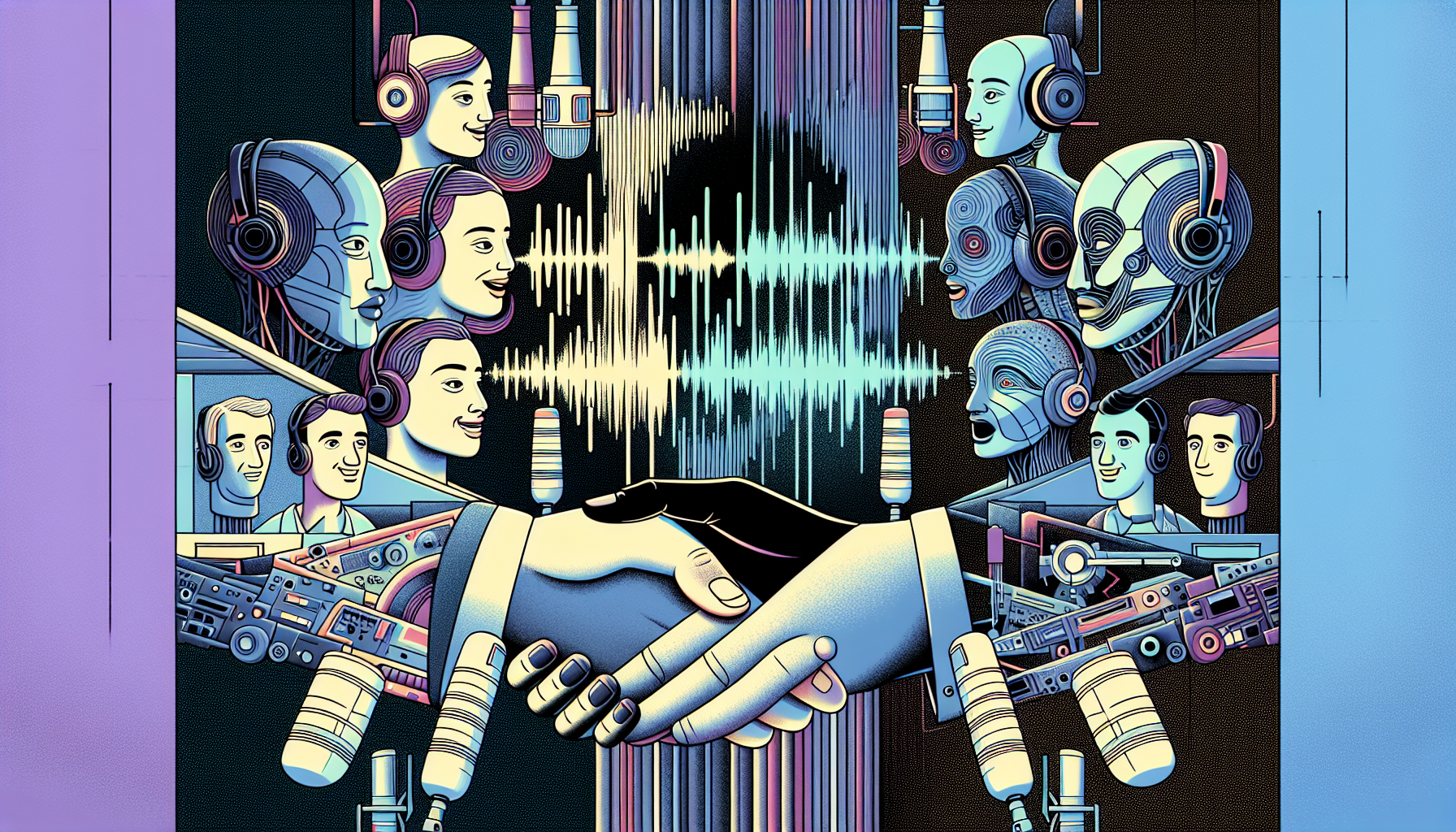
The emergence of AI voiceovers has significantly influenced voice actors and the wider industry. On one hand, AI voice technology presents new opportunities for voice actors to diversify their portfolios and explore niche markets. On the other hand, it raises ethical considerations regarding job displacement, fair compensation, and consent issues.
Voice actors can use AI technology to take on more projects simultaneously, creating new revenue streams from licensing agreements and personalized voice assistant applications. However, the industry must address ethical concerns to ensure that AI voice technology complements rather than replaces traditional voice acting.
New Opportunities for Voice Actors
AI voice technology empowers voice actors in the following ways:
- It allows them to experiment with diverse character voices, broadening their versatility and creative expression.
- This capability allows actors to showcase a wider range of vocal styles and accents, making them more appealing to diverse markets and projects.
- The surging demand for voice talent in streaming platforms, podcasts, and e-learning further highlights the growing relevance of the voice-acting industry.
Moreover, AI voiceovers create new revenue streams for voice actors through licensing agreements and branded content. By preserving and monetizing their vocal performances, actors can generate additional income while reaching new audiences. This complementary approach expands the creative toolkit available to performers, enhancing their marketability and career prospects.
Ethical Considerations and Industry Response
The emergence of AI voice technology has ignited discussions about job displacement and also brought up questions concerning equitable pay and the ongoing relevance of human voice actors. Consent is a significant ethical concern, especially regarding the use of individuals’ voices for AI synthesis without explicit permission. These issues underscore the need for clear protocols and fair compensation models to protect the rights and livelihoods of voice actors.
The industry is increasingly aware of these ethical considerations and is actively seeking solutions. Developing consent protocols and fair compensation models are crucial steps in ensuring that AI voice technology benefits all stakeholders. By addressing these concerns, the industry can foster a collaborative environment where AI and human actors coexist and thrive.
Overcoming Challenges in AI Voice Implementation
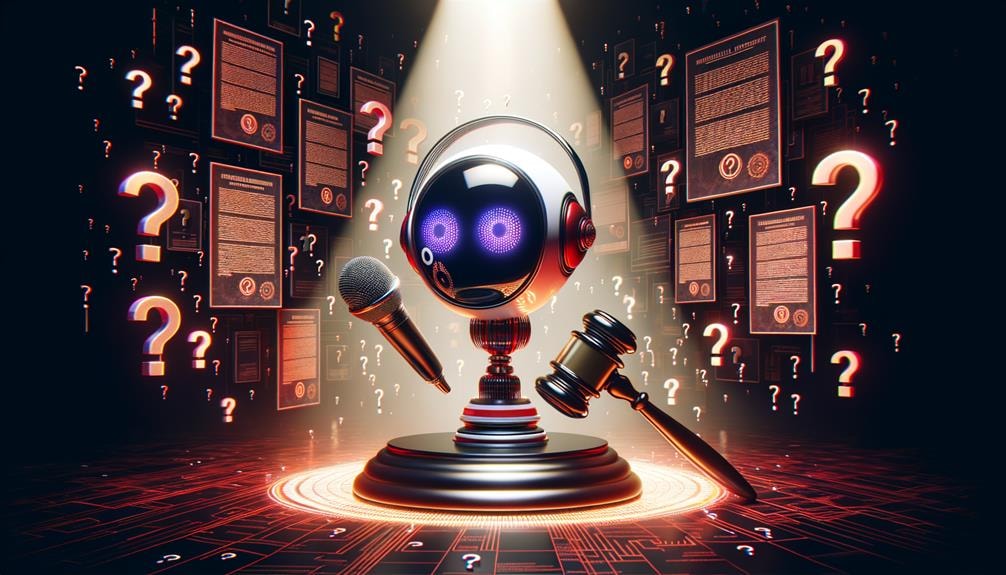
The integration of AI voice technology in film and animation involves several challenges that need to be tackled for the best results. Some of the primary challenges include:
- Achieving emotional authenticity in AI-generated voices. While AI voices have made significant strides, they still struggle to capture the nuanced emotional depth necessary for effective storytelling.
- Replicating human-like expressions. There are technical hurdles to overcome in order to create AI voices that can accurately convey facial expressions and body language.
- Managing conversational interruptions. AI voices need to be able to handle interruptions and natural pauses in conversation in order to create a more realistic and engaging experience.
These challenges are being actively addressed by researchers and developers in the field of AI voice technology.
To surmount these challenges, developers need to enhance AI models to more accurately capture the intricacies of human speech and emotion. This involves advanced emotional modeling and collaboration with creative professionals to ensure that AI-generated voices meet the high standards required for film and animation. Addressing these technical and emotional hurdles is crucial for the successful implementation of AI voice technology in the industry.
Achieving Emotional Authenticity
Establishing emotional authenticity in AI voices is key to effective storytelling and character portrayal in film and animation. The human voice can express at least 24 different types of emotions, a range that AI voices currently cannot replicate. This limitation poses a significant challenge for AI voice technology, as conveying nuanced performances is essential for engaging and believable characters.
To address this challenge, developers are focusing on advanced emotional modeling techniques that can better capture and convey the subtleties of human emotion. Collaboration with creative professionals, such as voice directors and actors, is also essential to ensure that AI-generated voices align with the artistic vision of the project. By integrating these approaches, AI voice technology can achieve greater emotional fidelity and enhance the overall storytelling experience.
Technical Hurdles and Solutions
Technical hurdles in AI voice implementation include difficulties in replicating complex human emotions, managing interruptions, and handling background noise. These challenges can impact the quality and coherence of AI-generated voices, making it essential to refine AI models to better capture human-like expressions and manage conversational dynamics.
Innovative solutions are being developed to address these technical challenges. For instance, Action AI has created technology that waits for the customer to resume speaking, providing necessary information without interrupting the flow of conversation. By continuously improving AI models and incorporating feedback from real-world applications, developers can overcome these technical hurdles and enhance the performance of AI voice technology in film and animation.
Here's a step-by-step plan for overcoming the challenges of AI voice implementation in film and animation:
| Step | Challenge | Solution Approach |
|---|---|---|
| 🎭 Achieving Emotional Authenticity | Capturing nuanced emotions is crucial for engaging characters but difficult for AI to replicate. | Advanced Emotional Modeling: Developers can use emotional datasets to train AI models on diverse emotional expressions, refining subtle cues like pitch, tone, and cadence to convey emotional depth. Collaborating with voice actors and directors helps to meet the artistic vision. |
| 🤖 Improving Human-Like Expressions | Conveying expressions such as facial cues and body language in AI-generated voices. | Adaptive Sound Modeling: Use multi-modal AI, incorporating visual cues to simulate expressions, and apply ML techniques to model these vocal subtleties. Pairing audio-visual AI algorithms can enhance perceived naturalness. |
| 🔄 Managing Conversational Interruptions | Realistic interactions require managing pauses, interruptions, and smooth conversational flow. | Conversational AI Enhancements: Use adaptive turn-taking technology, like Action AI’s solution, that waits for users to finish before responding. This prevents interruptions and adds a layer of realism to AI dialogues. |
| 🔊 Handling Background Noise | Background noise or cross-talk can degrade audio quality, impacting immersion. | Noise Filtering & Voice Isolation: Advanced filters can isolate speech from ambient noise, ensuring clean audio. Implementing real-time noise suppression helps maintain clarity in various environments. |
| 🔍 Continuous Refinement & Testing | Maintaining realistic and high-quality voice output across different scenarios and genres. | Feedback Loops: Regular testing with real-world applications, and using feedback to adjust AI models, improve reliability and voice quality. Continuous updates based on user and audience input keeps voices fresh and engaging. |
Future Trends and Predictions for AI Voices in Media
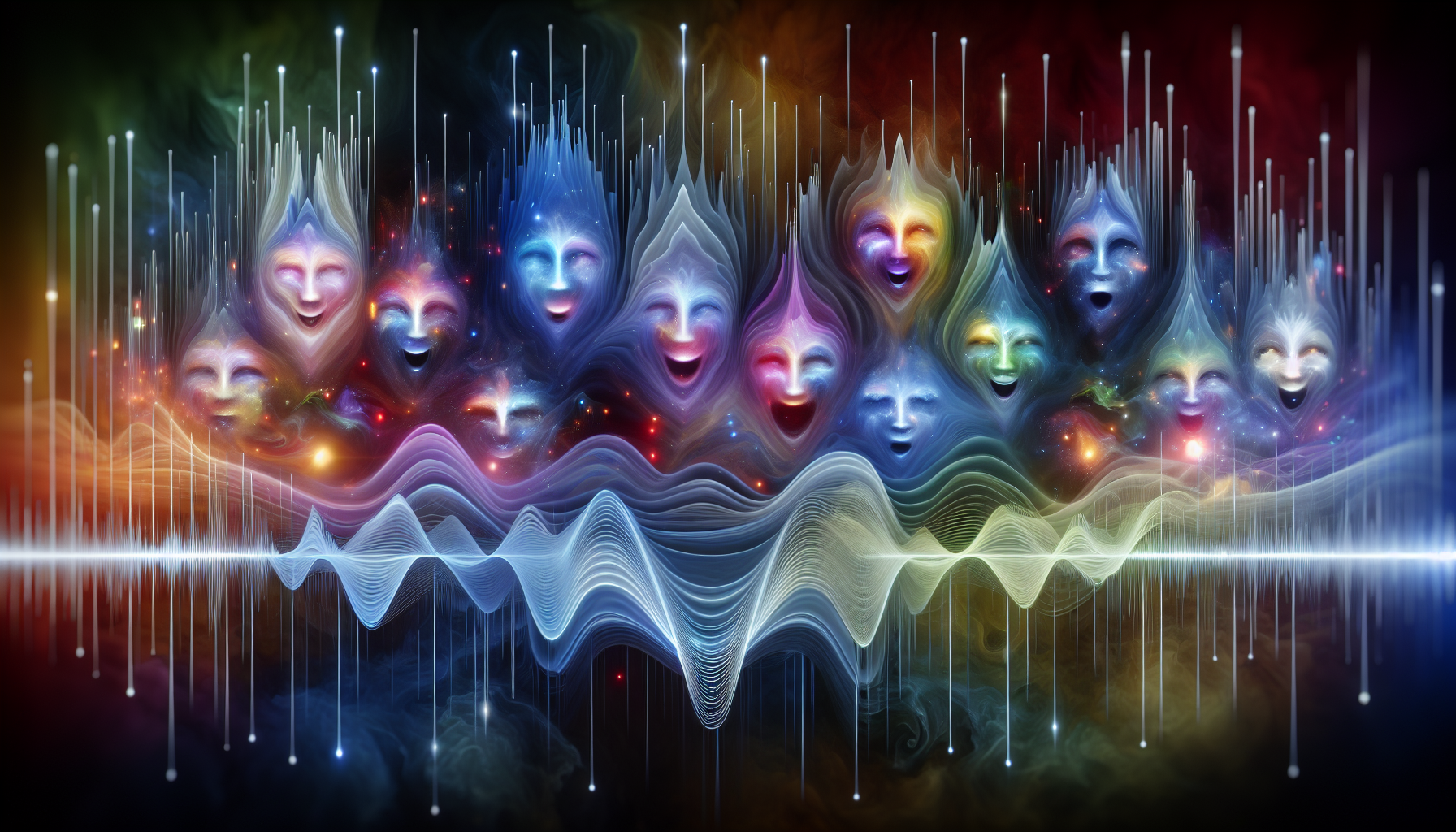
The future looks promising for AI voices in media, with upcoming advancements set to transform personalized and adaptive content. AI voice technology will enable:
- Dynamic interactive narratives, allowing audiences to influence narrative outcomes through real-time interactions
- Immersive experiences that adapt to the preferences and emotions of individual viewers
- Endless possibilities for creators and audiences alike
This level of engagement will create immersive experiences that adapt to the preferences and emotions of individual viewers, offering endless possibilities for creators and audiences alike.
As AI voices evolve, they will become instrumental in moulding the future of storytelling. From personalized narrative experiences to global inclusivity, the integration of AI voiceovers heralds a new era characterized by unprecedented creativity and accessibility. By continuously innovating and addressing current challenges, AI voice technology will transform the way we experience stories, making them more engaging, inclusive, and emotionally resonant.
Increased Accessibility and Inclusivity
AI voices improve accessibility for viewers with disabilities by offering audio descriptions, subtitles, and alternate language tracks. These features enable better accessibility and inclusivity, ensuring that diverse audiences can enjoy media content. Synthesized audio descriptions and accurate subtitles are particularly beneficial for individuals with visual or hearing impairments, providing a richer and more inclusive viewing experience.
Additionally, AI technology fosters inclusivity by catering to diverse linguistic communities through alternative language tracks. The rapid generation of translated voice tracks enhances global reach and helps maintain the authenticity of storytelling across different cultures. By making media content more accessible and inclusive, AI voices contribute to a more equitable and diverse entertainment landscape.
Shaping the Future of Storytelling
AI-generated voices are transforming storytelling by providing limitless opportunities for creators and audiences. The advanced AI models developed at DAISYS can synthesize speech that replicates the nuances of human voices, introducing a new level of customization and creative freedom for storytellers. This technology enables personalized experiences that adapt to the preferences and emotions of individual listeners, creating a more immersive and engaging narrative.
AI-enabled interactive storytelling will empower audiences to:
- Co-create immersive worlds and experiences by influencing narrative outcomes
- Experience dynamically adapting dialogue based on their input, preferences, and emotions
- Enjoy a fully immersive audio experience
- Explore a world of possibilities that were previously unimaginable
This level of interactivity and personalization marks a pivotal moment in the evolution of storytelling.
Summary
The evolution of AI voice technology has transformed the film and animation industry, offering new tools and possibilities for creators to captivate audiences. From early innovations in voice synthesis to advancements in natural-sounding AI voices, this technology has come a long way in enhancing character portrayal and storytelling. AI voice generators provide numerous benefits for studios, including custom voices on demand, reduced production costs, and faster turnaround times.
As we look to the future, AI voices will continue to revolutionize media by increasing accessibility and inclusivity and shaping the future of storytelling with personalized and interactive experiences. While challenges remain, such as achieving emotional authenticity and overcoming technical hurdles, the potential of AI voice technology is undeniable. By addressing these challenges and embracing the opportunities, the film and animation industry can harness the power of AI voices to create more engaging, inclusive, and emotionally resonant stories.
Frequently Asked Questions
How have AI voices evolved in the film and animation industry?AI voices have evolved from basic voice synthesis to highly natural and emotionally authentic performances, transforming character portrayal and storytelling in the film and animation industry. Nowadays, AI voices can play a significant role in bringing characters to life. |
What are the main benefits of AI voice generators for studios?AI voice generators provide custom voices on demand, cut production costs, and allow for quicker turnaround times, ultimately boosting efficiency for studios. |
How do AI voiceovers impact voice actors?AI voiceovers can create new opportunities for voice actors by allowing them to diversify their portfolios and explore niche markets, ultimately generating additional revenue streams. It's an exciting time for voice actors to explore new possibilities and expand their careers. |
What ethical considerations are associated with AI voice technology?Ethical considerations related to AI voice technology include job displacement, fair compensation, and consent issues, leading the industry to develop protocols and fair compensation models. |
What future trends are expected for AI voices in media?In the future, AI voices in media are expected to become more accessible and inclusive, offering personalized and interactive storytelling experiences with a greater global reach. This will enhance the overall media experience for consumers. |
Convert Your Voice with AI
Make your voice sound like those of famous arists.
Join Lalals and use our hyper-realistic voice converter now.